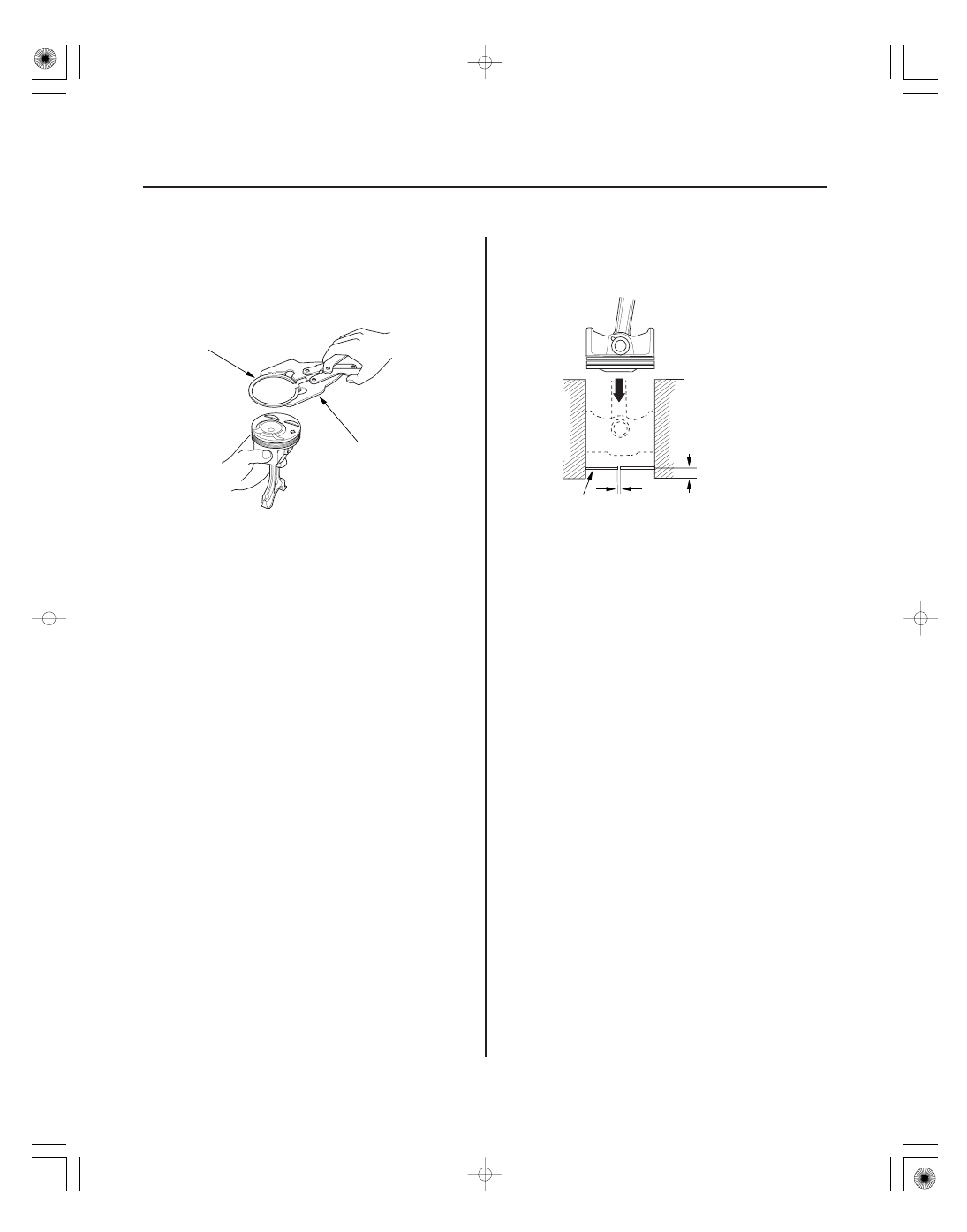Acura RSX Honda Integra. Manual - part 58

−
−
01
02
S6M6A00A18360245611KBAT00
−
−
−
−
−
−
−
−
−
−
−
−
Piston Ring End-Gap
Top Ring:
Standard (New): 0.20
0.35 mm (0.008
0.014 in.)
Service Limit:
0.60 mm (0.024 in.)
Second Ring:
K20A3 Engine:
Standard (New): 0.40
0.55 mm (0.016
0.022 in.)
Service Limit:
0.70 mm (0.028 in.)
K20A2, K20Z1 Engines:
Standard (New): 0.50
0.65 mm (0.020
0.026 in.)
Service Limit:
0.75 mm (0.030 in.)
Oil Ring:
K20A3 Engine:
Standard (New): 0.25
0.65 mm (0.010
0.026 in.)
Service Limit:
0.75 mm (0.030 in.)
K20A2, K20Z1 Engines:
Standard (New): 0.20
0.70 mm (0.008
0.028 in.)
Service Limit:
0.80 mm (0.031 in.)
7-22
Engine Block
Piston Ring Replacement
B
A
A
B
15
20 mm (0.6
0.8 in.)
1. Remove the piston from the engine block (see page
7-13).
2. Using a ring expander (A), remove the old piston
rings (B).
3. Clean all ring grooves thoroughly with a squared-
off broken ring or ring groove cleaner with a blade
to fit the piston grooves. The top and 2nd ring
grooves are 1.2 mm (0.05 in.) wide. The oil ring
groove is 2.0 mm (0.08 in.) wide. File down a blade,
if necessary. Do not use a wire brush to clean the
ring grooves, or cut the ring grooves deeper with
the cleaning tools.
NOTE: If the piston is to be separated from the
connecting rod, do not install new rings yet.
4. Using a piston, push a new ring (A) into the
cylinder bore 15
20 mm (0.6
0.8 in.) from the
bottom.
5. Measure the piston ring end-gap (B) with a feeler
gauge:
• If the gap is too small, check to see if you have
the proper rings for your engine.
• If the gap is too large, recheck the cylinder bore
diameter against the wear limits (see page 7-16).
If the bore is over the service limit, the engine
block must be rebored.